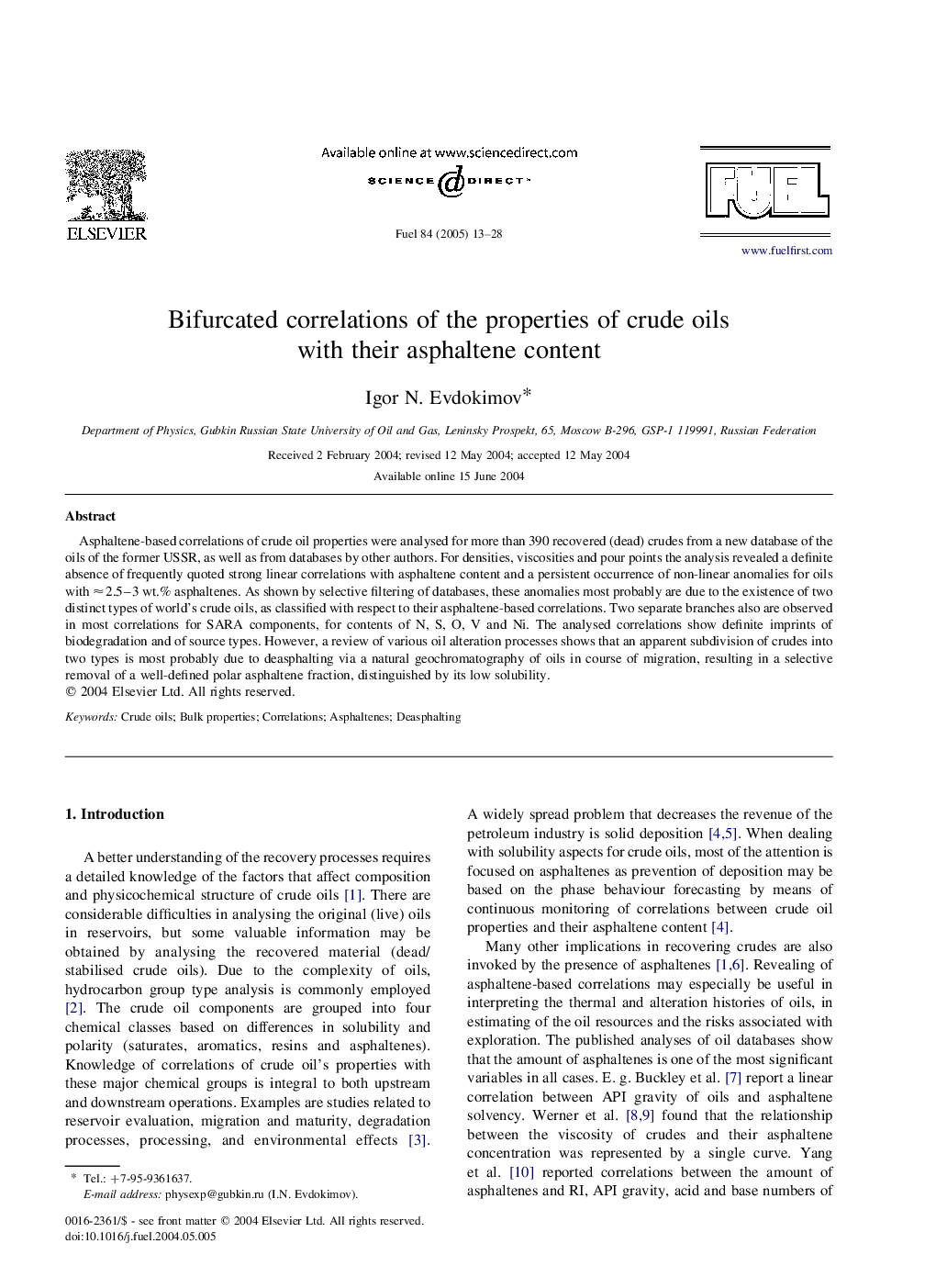| Article ID | Journal | Published Year | Pages | File Type |
|---|---|---|---|---|
| 10273277 | Fuel | 2005 | 16 Pages |
Abstract
Asphaltene-based correlations of crude oil properties were analysed for more than 390 recovered (dead) crudes from a new database of the oils of the former USSR, as well as from databases by other authors. For densities, viscosities and pour points the analysis revealed a definite absence of frequently quoted strong linear correlations with asphaltene content and a persistent occurrence of non-linear anomalies for oils with â2.5-3 wt.% asphaltenes. As shown by selective filtering of databases, these anomalies most probably are due to the existence of two distinct types of world's crude oils, as classified with respect to their asphaltene-based correlations. Two separate branches also are observed in most correlations for SARA components, for contents of N, S, O, V and Ni. The analysed correlations show definite imprints of biodegradation and of source types. However, a review of various oil alteration processes shows that an apparent subdivision of crudes into two types is most probably due to deasphalting via a natural geochromatography of oils in course of migration, resulting in a selective removal of a well-defined polar asphaltene fraction, distinguished by its low solubility.
Related Topics
Physical Sciences and Engineering
Chemical Engineering
Chemical Engineering (General)
Authors
Igor N. Evdokimov,
